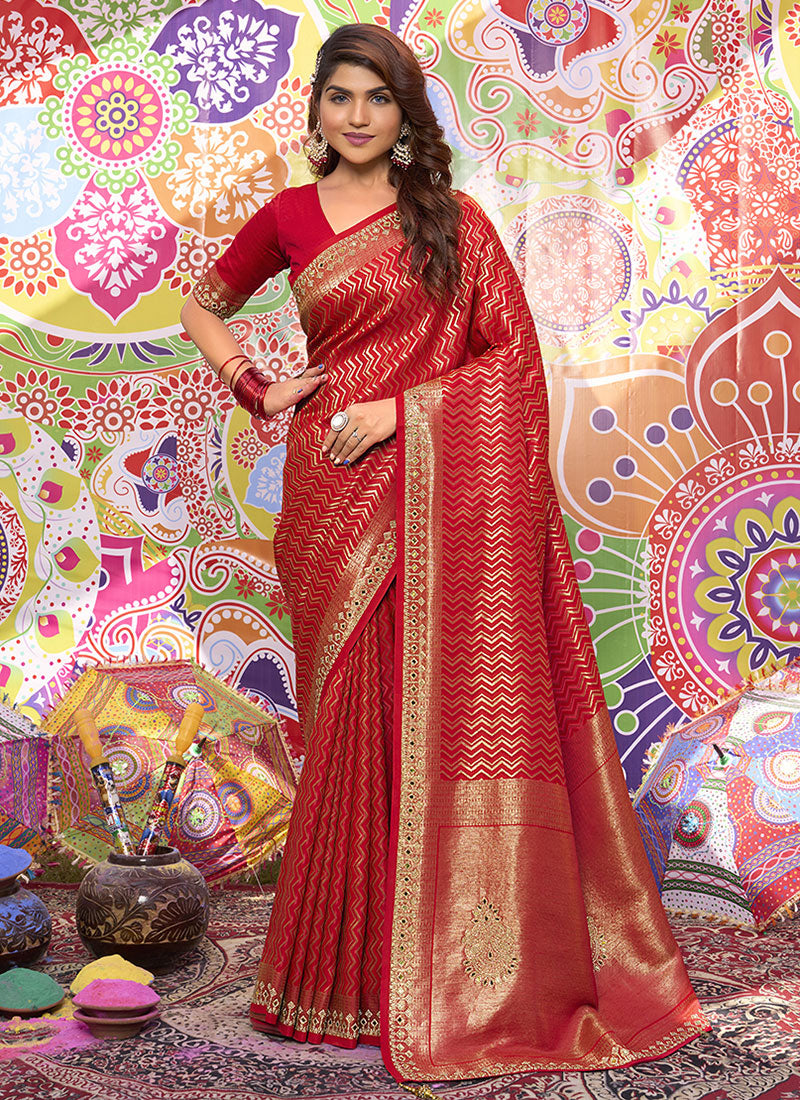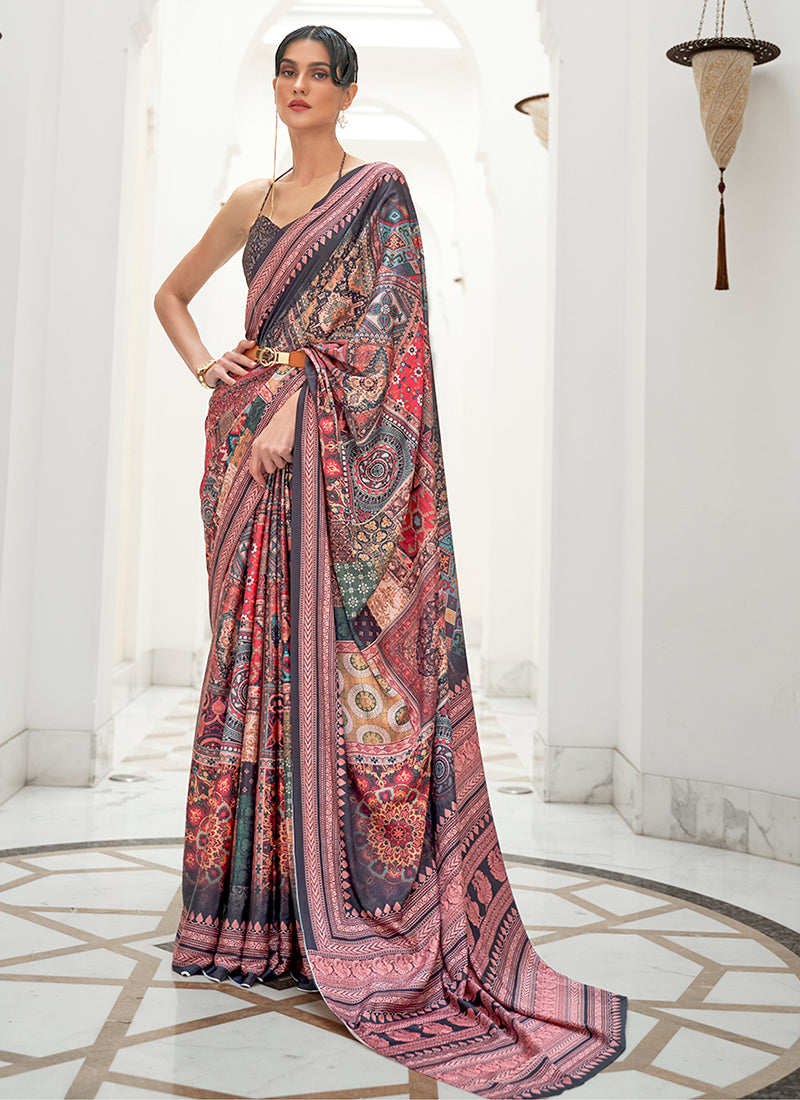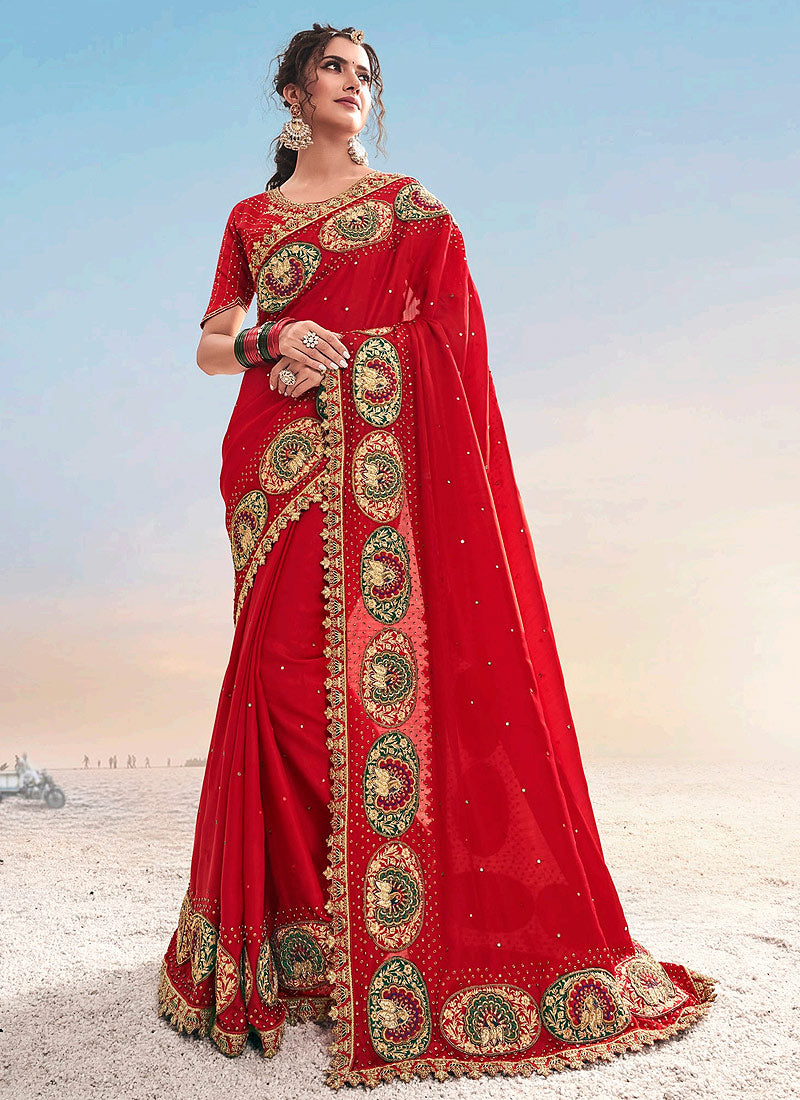Indian weddings are known for their grandeur, vibrant celebrations, and rich cultural traditions. Among the many elements that make an Indian wedding special, the wedding saree holds a place of immense significance. The saree, a traditional garment worn by women, is not just a piece of clothing but a symbol of grace, heritage, and cultural identity. In this blog, we will explore the intricacies of the Indian wedding saree, its historical and cultural importance, various regional styles, and its evolution in contemporary fashion.
Historical and Cultural Significance of the Wedding Saree:
The saree has been an integral part of Indian attire for thousands of years, with its origins tracing back to the Indus Valley Civilization around 28001800 BCE. Over the centuries, the saree has evolved, influenced by various dynasties, cultures, and traditions.
Symbol of Tradition: The wedding saree is deeply embedded in Indian culture, symbolizing purity, fertility, and marital bliss. It is often passed down through generations, becoming a cherished family heirloom.
Rituals and Customs: The saree plays a crucial role in wedding rituals. The draping style, color, and fabric are chosen based on regional customs and religious beliefs. For instance, red is traditionally considered auspicious and is the preferred color for brides in many parts of India.
Regional Varieties of Indian Wedding Sarees
India's vast cultural diversity is reflected in the myriad styles of wedding sarees, each region offering its unique designs, fabrics, and draping techniques.
- Banarasi Saree (Uttar Pradesh)
Fabric and Weaving: Banarasi sarees are made of finely woven silk and are famous for their intricate brocade or zari work with gold and silver threads.
Designs and Patterns: These sarees often feature elaborate designs inspired by Mughal art, including floral and foliate motifs, kalga, and bel. The pallu (end piece) is usually heavily decorated.
Cultural Significance: A Banarasi saree is a quintessential bridal attire in North India, especially in Bengal and Uttar Pradesh. Its opulence makes it a favorite for weddings.
- Kanjeevaram Saree (Tamil Nadu)
Fabric and Weaving: Kanjeevaram sarees are woven from pure mulberry silk and are renowned for their durability and lustrous texture.
Designs and Patterns: These sarees feature bold and bright colors with contrasting borders adorned with temple patterns, checks, stripes, and floral motifs.
Cultural Significance: In South India, especially Tamil Nadu, Kanjeevaram sarees are a staple for bridal wear. The intricate craftsmanship and richness of the silk make them a symbol of prosperity and elegance.
- Paithani Saree (Maharashtra)
Fabric and Weaving: Paithani sarees are woven from silk and are characterized by their oblique square designs and peacock motifs on the pallu.
Designs and Patterns: These sarees often feature vibrant colors like gold, green, red, and purple, with intricate zari borders.
Cultural Significance: Paithani sarees are treasured heirlooms in Maharashtra. They are considered a musthave in a Maharashtrian bride’s trousseau.
- Bandhani Saree (Gujarat and Rajasthan)
Fabric and Weaving: Bandhani sarees are created using the tiedye technique, where the fabric is tied in small knots before dyeing, resulting in a pattern of dots.
Designs and Patterns: Common patterns include dots, waves, stripes, and checks, usually in bright colors.
Cultural Significance: Bandhani sarees are popular bridal attire in Gujarat and Rajasthan. They symbolize joy and festivity, making them ideal for weddings and celebratory occasions.
- Assamese Mekhla Chador (Assam)
Fabric and Weaving: The Mekhla Chador is woven from silk, particularly the indigenous Muga silk, known for its natural golden sheen.
Designs and Patterns: These sarees often feature traditional motifs such as flowers, animals, and geometric patterns.
Cultural Significance: The Mekhla Chador is an essential part of bridal attire in Assam. Its elegance and cultural relevance make it a cherished garment for Assamese brides.
Contemporary Trends in Wedding Sarees
While traditional wedding sarees remain timeless, contemporary trends have introduced new styles and innovations, blending tradition with modernity.
Designer Sarees: Modern brides often opt for designer sarees that offer a fusion of traditional and contemporary elements. Renowned designers like Sabyasachi Mukherjee, Manish Malhotra, and Anita Dongre create exquisite bridal sarees that cater to modern tastes while respecting traditional aesthetics.
Saree Gowns: A popular trend is the saree gown, which combines the elegance of a saree with the convenience of a gown. This style is particularly favored for its ease of wear and modern appeal.
Innovative Draping Styles: Contemporary brides experiment with various draping styles to give a fresh look to traditional sarees. Styles such as the lehenga saree, dhoti saree, and pant saree have gained popularity.
Sustainable Fashion: With a growing awareness of sustainability, many brides are opting for ecofriendly fabrics and handloom sarees. This trend supports traditional artisans and promotes environmentally responsible fashion.
The Bridal Trousseau: Beyond the Wedding Saree
The bridal trousseau is a collection of garments, jewelry, and other essentials that a bride takes with her to her new home. While the wedding saree is the highlight, the trousseau includes a variety of sarees for different occasions.
Reception Saree: Often more contemporary, the reception saree can be in pastel shades with modern embellishments.
Temple Saree: A simple yet elegant saree, usually in traditional silk, worn for temple visits and religious ceremonies.
Party Wear Sarees: These sarees are designed for social gatherings and family functions, often featuring lighter fabrics and trendy designs.
Conclusion: The Enduring Legacy of the Indian Wedding Saree
The Indian wedding saree is more than just a garment; it is a celebration of heritage, craftsmanship, and cultural identity. Each saree tells a story of the region it comes from, the weavers who create it, and the bride who wears it. As Indian fashion continues to evolve, the wedding saree remains a timeless symbol of elegance and tradition, cherished by brides across generations.
From the opulent Banarasi and Kanjeevaram sarees to the vibrant Bandhani and elegant Mekhla Chador, the wedding saree is an integral part of Indian weddings. It represents not just the beauty and grace of the bride but also the rich cultural tapestry of India. As we celebrate the enduring legacy of the Indian wedding saree, we honor the traditions and artisans who keep this heritage alive, weaving stories of love, joy, and cultural pride into every thread.













